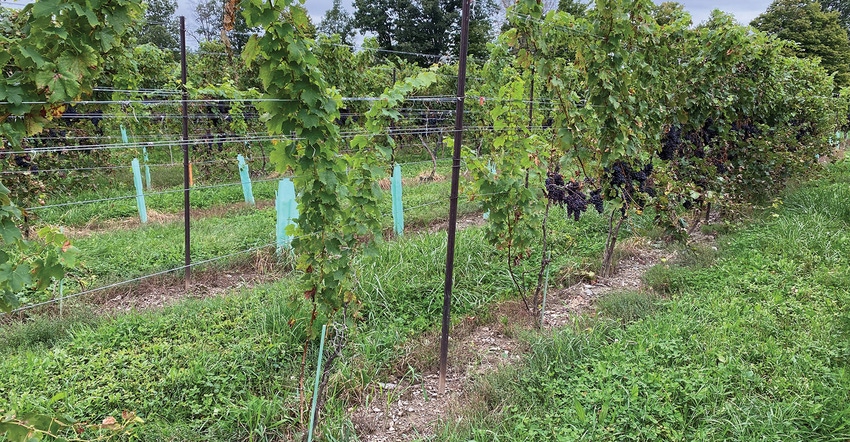
When you’ve been in the grapevine business as long as he has, finding a “first” becomes more and more difficult. But Cornell plant pathologist Marc Fuchs has done so with a vine removal technique that foils devastating grape diseases.
“The concept of spatial roguing may puzzle some growers and winemakers,” he said, “but removing the diseased grapevine AND TWO VINES ON EITHER SIDE OF IT can reduce the bane of vineyards, leafroll disease.”
There’s no cure for leafroll, a virus spread by mealybugs that alters grape quality and reduces yield. Traditionally, growers have torn out infected vines and replaced them with healthy ones.
Now, in the first study of its kind, spatial roguing has been shown to reduce leafroll in commercial vineyards because removal of the extra vines creates a moat-like space and eliminates the pests means of transporting the virus.
Already published in the American Journal of Enology and Viticulture, the five-year spatial rogueing research project on a Cabernet plot at an upstate New York winery reduced leafroll virus from four percent to near zero — even as unrouged vines nearby increased from five percent to 16%.
The vineyard manager at the research plot was quoted in the Cornell Chronicle as saying —“Managing leafroll used to be a bit like Whack-a-Mole because it would just keep popping up. By acting quickly and utilizing the spatial rogueing strategy, we learned we could avoid having to remove large sections of the vineyard which would translate to more consistent yield and quality.”
Pulling and replanting
Partnering with Miguel Gomez and Shadi Atallah, Fuchs modeled something the team called a bio-economic spread of the disease, factoring costs of removing just one vine or also removing the two adjacent vines and how much money the grower might lose in either case because it takes five years for the newly planted vines to begin producing.
“Growers like to grow things, not tear them out, but it’s worth losing a bit of money upfront by pulling and replanting because dividends occur faster down the road,” he said.
“As a virologist, my disease management message to the grower community didn’t resonate as much as I anticipated, but when I teamed up with an entomologist and an economist to tell the story, it began to make grower sense from the most important aspect — profit. Once we put a multidisciplinary spin on it and added dollar figures to it, the conversation went to another level. It was a combination of them believing our team effort, us listening to the growers, and putting A and B together. That interdisciplinary collaboration was the game changer.”
Some of what Fuchs calls ‘visionary growers’ quickly became proactive in spatial roguing vineyard blocks proving the theory that a little bit of time, money, and effort spent up-front saves more time, labor, and money down the line.
“This isn’t Nobel Peace Prize research. It’s pretty simple, common sense,” he said. “The challenge was to convince growers to invest upfront in order to reap the dividends faster."
About the Author(s)
You May Also Like




